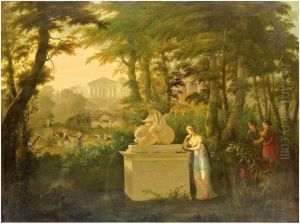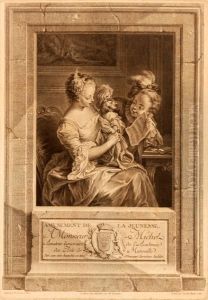Francois Nicolas Dupuis Paintings
François Nicolas Dupuis was a French artist born in 1688 in Paris, France. He was known for his work as an engraver, particularly for his contributions to the art of medal engraving, which was a highly respected discipline in the decorative arts during his time. Dupuis came from a background enriched with artistic tradition. His father, Nicolas Dupuis, was also an engraver, which likely influenced François Nicolas's career choice and provided him with a solid foundation in the arts from an early age.
Dupuis developed his skills under the guidance of his father and possibly other master engravers of the period. As he honed his craft, he became renowned for his precision and ability to capture fine details in his engravings. His work often featured portraits, historical scenes, and allegorical subjects, which were popular themes in the art and decorative objects of the 18th century.
Despite the prominence of his work, detailed records of Dupuis's life and career are scarce. However, it is known that he belonged to the Académie Royale de Peinture et de Sculpture, an institution that played a significant role in the artistic life of France before the French Revolution. As a member, Dupuis would have been part of a select group of artists who were recognized for their contributions to French art and who helped to shape the aesthetic standards of the time.
Dupuis's career spanned a significant period of French history that saw the reign of Louis XIV, the Regency period, and the early years of Louis XV's reign. The artistic styles during these periods ranged from the mature Baroque to the Rococo, and Dupuis's work would have reflected the shifting tastes and preferences of the French court and its patrons.
François Nicolas Dupuis passed away in 1771, leaving behind a legacy as a skilled engraver whose work captured the elegance and sophistication of 18th-century French art. Although he may not be as widely recognized as some of his contemporaries, his contributions to the field of medal engraving and the art of his time remain significant. His engravings continue to be appreciated by collectors and historians for their technical mastery and their reflection of the cultural and artistic sensibilities of his era.

